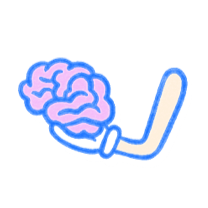*This post has been updated to reflect the ASWB Examination Guidebook, effective March 31, 2025.
The ASWB Bachelors (BSW) exam assesses the foundational knowledge and skills required for entry-level generalist social work practice. Here’s everything you need to know in 2025.
ASWB Bachelors Exam Overview
The ASWB Bachelors exam contains 170 multiple-choice questions. Of these, 150 are scored, and 20 are pretest items that are unscored. Candidates have 4 hours to complete the exam. It is designed for individuals with a Bachelor of Social Work (BSW) degree and does not require post-degree experience.
BSW Content Areas
I. Human Development, Diversity, and Behavior in the Environment (25%)
- Demonstrate knowledge of theories and concepts of human growth and development across the lifespan.
- Analyze the influence of social systems on individual and group behavior.
- Evaluate the impact of diversity, discrimination, and oppression on individuals, families, groups, organizations, and communities.
II. Assessment (29%)
- Conduct biopsychosocial assessments and collect relevant client data.
- Assess client needs, strengths, and challenges to inform practice.
- Develop appropriate and effective intervention plans based on client assessment.
III. Interventions with Clients/Client Systems (26%)
- Apply evidence-informed interventions with individuals, families, groups, organizations, and communities.
- Facilitate positive change and client empowerment through appropriate intervention strategies.
- Monitor and evaluate the effectiveness of interventions.
IV. Professional Relationships, Values, and Ethics (20%)
- Apply social work values and ethical principles in all areas of practice.
- Utilize the NASW Code of Ethics to guide ethical decision-making.
- Establish and maintain professional relationships and appropriate boundaries.
- Resolve ethical dilemmas using professional standards and critical thinking.
ASWB BSW Exam Study Tips
- Download and review the official ASWB Guidebook to familiarize yourself with test policies and the content outline
- Practice with a Pocket Prep mock exam to simulate test conditions and track your readiness
- Pay close attention to ethics, communication skills, and generalist intervention methods
- Use flashcards or apps to memorize key terms, theories, and assessment tools
- Form a study group to review material and quiz each other regularly

